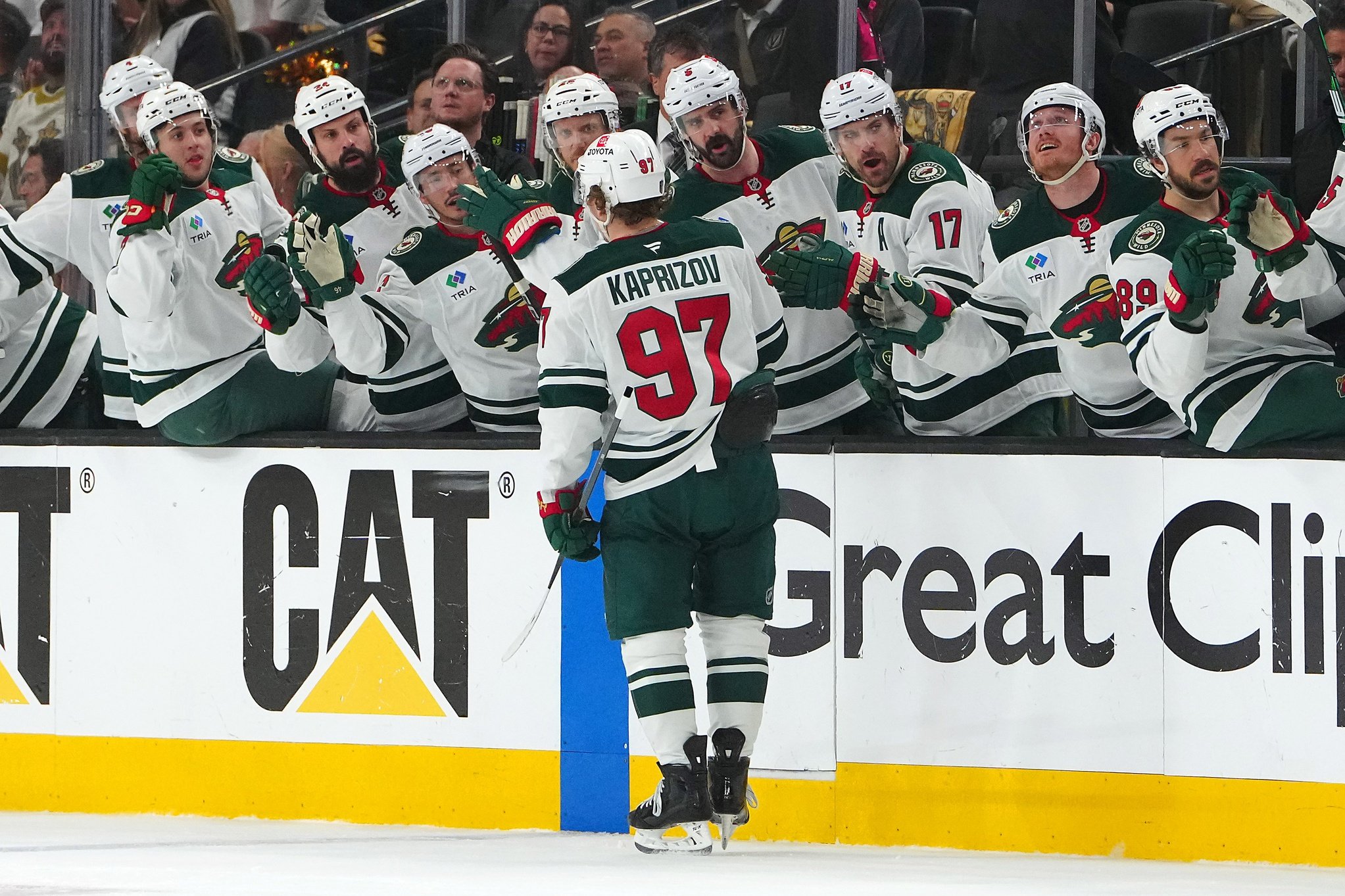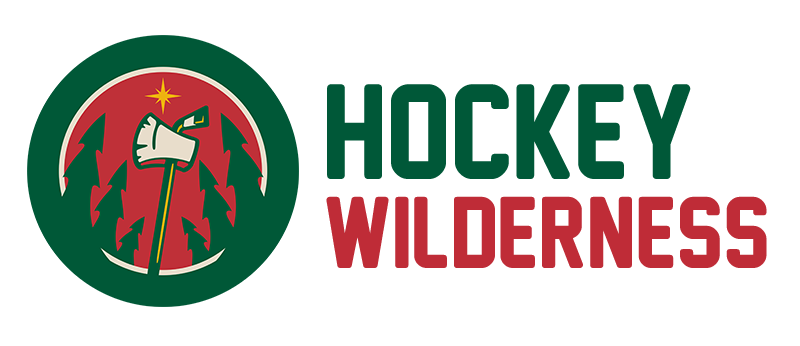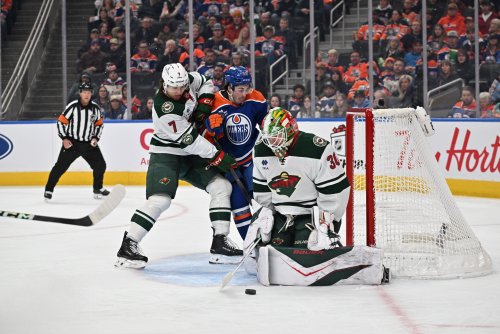
The Kirill Kaprizov contract is a major news story, which means everybody needs to fire off their takes. On one side, you have normal, level-headed folks ecstatic that the best player in franchise history is locked up for his entire prime. On the other side are the joyless pocket-watchers who can’t believe Kaprizov will make over $150 million to play a game.
If you’re quoting Drew Doughty and calling perhaps the best Russian-born player in the world “overpaid,” I can’t help you. Then again, he would know, since Doughty once topped The Athletic’s list of worst contracts in the NHL less than a year after firing that shot.
Kaprizov will need to age gracefully or play under a rapidly expanding salary cap to live up to the value of his contract. According to Dom Luszczyszyn’s analytical model, Kaprizov’s annual cap hit is about $2 million per year higher than his on-ice value.
However, I can’t make a blog post out of just ripping Drew Doughty and re-posting tweets. So let’s go deeper. What kind of team can the Wild build around Kaprizov, now that the salary cap picture clarifies around the superstar’s mega-deal?
First, the good news: Kaprizov’s raise doesn’t kick in until the 2026-27 season. That means that as of this moment, Minnesota is projected to have around $16 million in salary cap space at the trade deadline. That only includes the top 12 forwards, 6 defensemen, and 2 goaltenders, so some of that $16 million will be allocated to press box players or injury call-ups, such as Vinnie Hinistroza or Jack Johnson.
However, the Wild should still have enough space at the deadline to bring in a serious addition at the trade deadline, barring another avalanche of injuries like they saw in each of the past two seasons. Concerns that the team is “injury prone” are likely overblown -- while some injuries can be recurrent, many are simply bad luck.
To name some of the hottest deadline ideas floated lately, Pittsburgh Penguins center Evgeni Malkin’s cap hit is only $6.1 million. New York Rangers winger Artemi Panarin would cost just under $11.7 million.
If the Wild can successfully accrue cap space, the sky is the limit in March 2026.
But what about the years that the Wild have to pay out those NHL-record cap hits to Kaprizov? For that, we need to break out the spreadsheets.

Salary data courtesy of PuckPedia.com
Minnesota has a long to-do list in 2026. Expiring free agents include Vladimir Tarasenko, Mats Zuccarello, Marcus Johansson, Vinnie Hinistroza, Zach Bogosian, Jack Johnson, Filip Gustavsson, and Cal Petersen. David Jiricek is also a pending restricted free agent. Some of those are easy replacements, but the list includes both second-line wingers, the starting goaltender, and probably the opening-night fifth, sixth, and eighth defensemen.
For this exercise, assume Gustavsson is extended for just over $7 million per year. That leaves around $15.9 million to find two left wings, a Johansson replacement, and fill out their third defensive pair.
It’s almost impossible to project a Jiricek extension, given that his 2025-26 play will have a crucial impact on his contract. However, given how few games he’s played over the past few seasons, an affordable bridge contract seems likely. Copy-pasting the Jamie Drysdale contract with an adjustment for cap inflation, a three-year contract with an average annual value (AAV) of $2.86 million seems appropriate.
The most expensive and most important item is replacing Tarasenko and Zuccarello. The team could re-sign them, but it’s unlikely they could keep up second-line play in ‘26-27 at ages 34 and 39, respectively. A free agent replacement is more likely if the team is truly chasing a Stanley Cup.
Without knowing which wingers will hit the open market on June 1, 2026, it's difficult to be sure of what term and cap hits would make sense. However, accounting for 4% annual salary cap inflation over the next several seasons, and using The Athletic’s analytical model, we can project some phantom second-liner contracts.
An average second-liner would be worth an $8.9 million AAV on a three-year deal, and $9.4 million on a five-year deal. If you talk yourself into a lower-end second-line forward, those numbers turn into $7.7 million and $8.2 million, respectively.
If you’re keeping score at home, you’ll notice that we’ve run out of money before we could even afford the second free-agent forward. We still haven’t replaced Bogosian, and we barely have enough cap space for a 13th forward or injury call-ups.
That raises several questions about the choices we made earlier. The biggest of these is the Gustavsson extension. Should the Wild let Gustavsson walk, and hope to ride a more affordable tandem of rookie Jesper Wallstedt and an affordable free agent?
Before hitting the panic button, however, remember that cap dollars are not the only currency a team has to acquire new talent. In other words, free agency is not the only way to fill roster spots.
To replace Tarasenko, Zuccarello, Bogosian, and Johansson, Minnesota has three options. In order from least to most expensive, those options are:
- Backfill from their prospect pool. For example, promote somebody from Iowa directly to the second line.
- Promote a prospect and replace their previous role. Example: Liam Ohgren fills Tarasenko’s second-line role, and Minnesota pays a free agent fourth-liner.
- Extend the player to remain in his current role, or replace him with a free agent.
Of course, the cap space ran dry before all the roles were filled, because there is a better plan in place. The Wild front office isn’t praying that $23 million in projected 2026-27 cap space can replace two second-line forwards, a starting goaltender, a fourth liner, and a third-pair defenseman. At least, not without some internal improvements.
That’s the answer to the type of team Minnesota can put around Kaprizov. If there is hope, it rides on their prospects. If two of Danila Yurov, Liam Ohgren, Charlie Stramel, Hunter Haight, and Riley Heidt can make a jump into a second-line role, they negate one of those needs. Even if they can step into a third-line role and make one of the Wild veterans expendable, that can open up space elsewhere.
On the other hand, however, this team relies on prospects Zeev Buium and David Jiricek to provide at least third-pair quality defense. While they could meet that standard, the third pair in the NHL is more challenging than the first pair in college hockey or the AHL.
If either of those defensemen doesn’t develop to replace the declining top-three defensemen, Jared Spurgeon, Jonas Brodin, and Jake Middleton, that also becomes a major liability. On the other hand, if Buium, Jiricek, and Faber hit their ceiling, they could be better than the current core.
You get the picture.
The Wild’s cap situation isn’t perfect with Kaprizov under contract. Assembling a championship roster won’t be as easy as a few strokes of the pen each offseason.
On the other hand, many teams would envy Minnesota’s position. They have few holes on this year’s roster, plenty of cap space to add at the trade deadline, and a superstar under contract. They didn’t need to mortgage their future to do it either -- their prospect pool is reaching maturity, and they still hold first-round picks in each of the next three years.
It’s hard to assemble a better championship plan than Minnesota’s current roster. They’ve already succeeded at the hardest part: finding a superstar and keeping him in town.
The final phase of the plan hinges on executing prospect development effectively. It’s a frustrating conclusion as a fan, but it’s also exactly what sports are all about.
Minnesota has the opportunity to field an exceptional team over the next several years. If they succeed, it won’t be because the guys in suits did everything better than the other teams’ guys in suits. Instead, it will be a reflection of what sports are all about: hours in the gym, a dedication to craft, and the discipline to become the very best hockey player possible.
Combine that with the talent that the Wild’s top prospects have shown at the lower levels of hockey, and the roster is in exactly the right place to go all the way.
Think you could write a story like this? Hockey Wilderness wants you to develop your voice, find an audience, and we'll pay you to do it. Just fill out this form.
-
 4
4
-
 1
1








Recommended Comments
Join the conversation
You can post now and register later. If you have an account, sign in now to post with your account.
Note: Your post will require moderator approval before it will be visible.